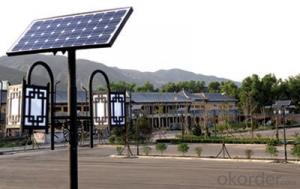Solar energy has been a game-changer in the world of renewable energy, and at the heart of it all are photovoltaic (PV) solar cells. These tiny marvels of technology have the power to harness the sun’s energy and convert it into electricity, making it a sustainable and eco-friendly alternative to traditional power sources. But what exactly are PV solar cells, and how do they work? Let’s dive into the world of solar energy and explore the magic behind these innovative cells.
Unveiling the Mystery of PV Solar Cells
PV solar cells, also known as solar panels, are made up of layers of semiconductor materials, usually silicon. When sunlight hits these cells, the energy from the photons in the sunlight is absorbed by the semiconductor material, causing electrons to be released and creating an electric current. This current can then be used to power homes, businesses, and even entire communities.
The Journey from Sunlight to Electricity
The process of converting sunlight into electricity may sound simple, but it’s actually a complex series of events. Here’s a step-by-step breakdown of how it all works:
1. Absorption of Sunlight: The first step is the absorption of sunlight by the solar cells. The sunlight contains photons, which are particles of light energy.
2. Generation of Electron-Hole Pairs: When photons hit the semiconductor material, they transfer their energy to the electrons in the material, causing them to become excited and break free from their atoms, leaving behind ‘holes’.
3. Separation of Charge Carriers: The excited electrons are then separated from the holes, creating a flow of electric charge. This is facilitated by an electric field within the solar cell.
4. Collection of Electric Current: The separated charges are collected at the front and back contacts of the solar cell, creating a flow of electric current that can be used to power electrical devices.
5. Inverter Conversion: The electric current generated by the solar cells is direct current (DC), but most appliances use alternating current (AC). An inverter is used to convert the DC into AC, making it suitable for use in homes and businesses.
The Many Faces of PV Solar Cells
PV solar cells come in various types, each with its own unique characteristics and applications. Let’s take a look at some of the most common types:
– Monocrystalline Solar Cells: These are made from a single crystal of silicon and are known for their high efficiency and long lifespan. They are often used in residential and commercial installations.
– Polycrystalline Solar Cells: Made from multiple crystals of silicon, these cells are less expensive to produce but have slightly lower efficiency compared to monocrystalline cells.
– Thin-Film Solar Cells: These cells use a thin layer of semiconductor material and are known for their flexibility and lightweight nature. They are often used in applications where space is limited, such as on rooftops or in portable devices.
The Role of PV Solar Cells in a Solar Energy System
PV solar cells are the core component of a solar energy system. They work in tandem with other components to create a complete system that can generate, store, and distribute electricity. Here’s a brief overview of the other components:
– Mounting System: This is the structure that holds the solar panels in place and ensures they are positioned to receive maximum sunlight.
– Inverter: As mentioned earlier, the inverter is responsible for converting the DC electricity generated by the solar cells into AC electricity.
– Battery Storage: In some solar energy systems, batteries are used to store excess electricity generated during the day for use during periods of low sunlight or at night.
– Charge Controller: This device regulates the flow of electricity between the solar panels, the battery, and the inverter, ensuring that the system operates efficiently and safely.
– Electrical Protection: Circuit breakers and fuses are used to protect the system from electrical faults and to prevent damage to the components.
The Environmental Impact of PV Solar Cells
One of the most significant advantages of PV solar cells is their minimal environmental impact. They produce no greenhouse gas emissions during operation and have a relatively low carbon footprint compared to fossil fuels. Additionally, the materials used in their production are abundant and can be recycled, reducing waste and promoting sustainability.
The Future of PV Solar Cells
As technology advances, so does the efficiency and affordability of PV solar cells. Researchers are constantly working on new materials and designs to improve the performance and reduce the cost of solar cells. Some of the exciting developments on the horizon include:
– Perovskite Solar Cells: These cells use a perovskite material as the light-absorbing layer, offering high efficiency and the potential for lower production costs.
– Tandem Solar Cells: By combining different materials, tandem solar cells can capture a wider range of the solar spectrum, increasing their overall efficiency.
– Bifacial Solar Cells: These cells can absorb sunlight from both sides, increasing their energy generation capacity.
Embracing the Power of the Sun
The potential of PV solar cells is immense, and as we continue to innovate and improve upon this technology, the future looks bright for solar energy. By embracing the power of the sun, we can reduce our reliance on fossil fuels, decrease greenhouse gas emissions, and work towards a cleaner, more sustainable future. So, the next time you see a solar panel, remember the tiny, yet powerful PV solar cells at work, transforming sunlight into electricity and contributing to a greener tomorrow.

